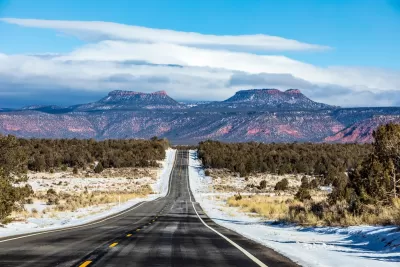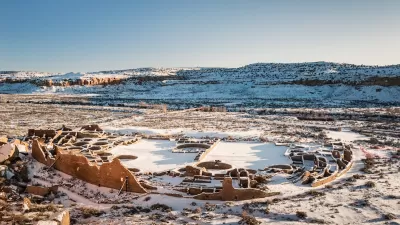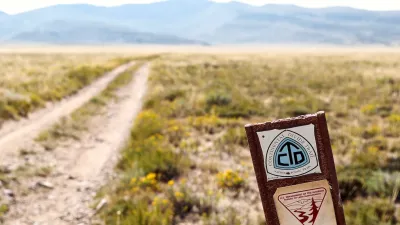An executive order from the Department of the Interior could gut protections for public lands established under the Antiquities Act.

The Department of the Interior appears poised to open federal public lands, including national monuments, to more mining, per an executive order signed by newly appointed Interior Secretary Doug Burgum.
As Bobby Magill reports in Bloomberg Law, the order directs staff to “review and, as appropriate, revise all withdrawn public lands, consistent with existing law.” The order calls for a plan that will include coal mining and offshore oil and gas operations. “The order also directs Interior agencies to prioritize critical mineral development and help establish the US ‘as the leading producer and processor of nonfuel minerals, including rare earth minerals’ with additional focus on critical minerals.”
The move could imperil national monuments such as Bears Ears and Grand Staircase-Escalante in Utah, which were created through the 1906 Antiquities Act. However, experts warn that “The language of the order makes clear that withdrawing rights to mine minerals in monuments is to be done in ways that are consistent with existing law,” meaning the department will face a long process to reopen lands closed to development.
A case currently before the Tenth Circuit Court of Appeals, Garfield County v. Biden, also challenges the President’s authority to create new national monuments under the Antiquities Act.
FULL STORY: Interior Considers Opening National Monuments to Mining

Maui's Vacation Rental Debate Turns Ugly
Verbal attacks, misinformation campaigns and fistfights plague a high-stakes debate to convert thousands of vacation rentals into long-term housing.

Planetizen Federal Action Tracker
A weekly monitor of how Trump’s orders and actions are impacting planners and planning in America.

In Urban Planning, AI Prompting Could be the New Design Thinking
Creativity has long been key to great urban design. What if we see AI as our new creative partner?

King County Supportive Housing Program Offers Hope for Unhoused Residents
The county is taking a ‘Housing First’ approach that prioritizes getting people into housing, then offering wraparound supportive services.

Researchers Use AI to Get Clearer Picture of US Housing
Analysts are using artificial intelligence to supercharge their research by allowing them to comb through data faster. Though these AI tools can be error prone, they save time and housing researchers are optimistic about the future.

Making Shared Micromobility More Inclusive
Cities and shared mobility system operators can do more to include people with disabilities in planning and operations, per a new report.
Urban Design for Planners 1: Software Tools
This six-course series explores essential urban design concepts using open source software and equips planners with the tools they need to participate fully in the urban design process.
Planning for Universal Design
Learn the tools for implementing Universal Design in planning regulations.
planning NEXT
Appalachian Highlands Housing Partners
Mpact (founded as Rail~Volution)
City of Camden Redevelopment Agency
City of Astoria
City of Portland
City of Laramie





























